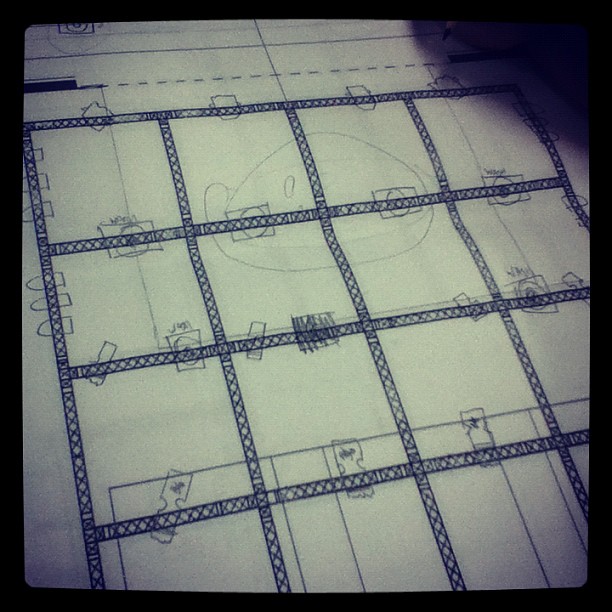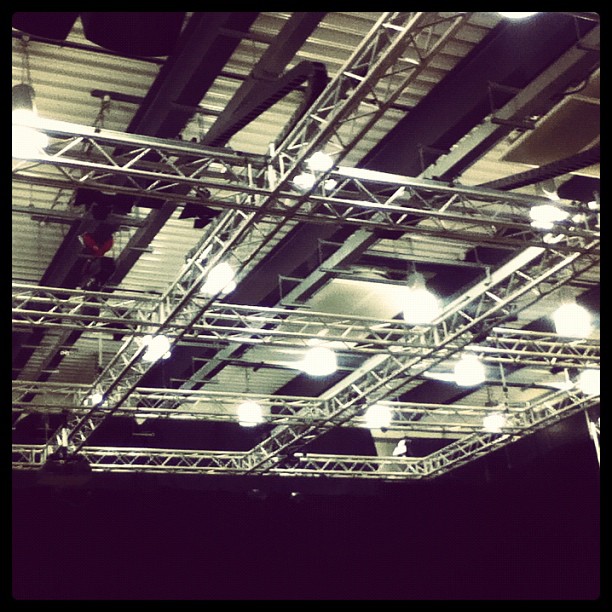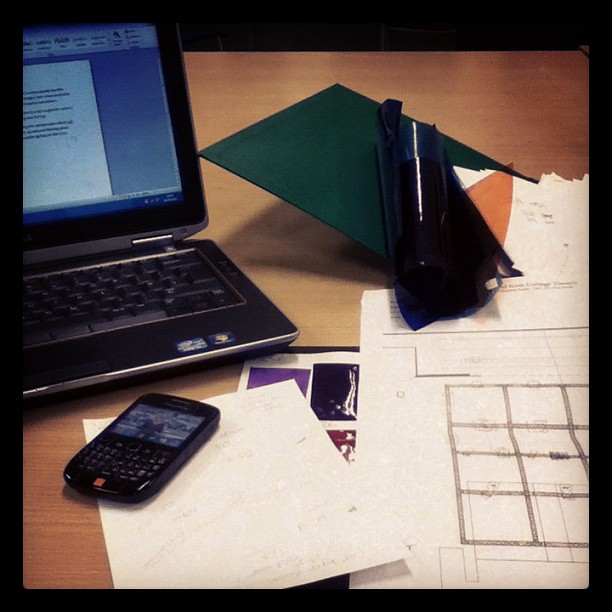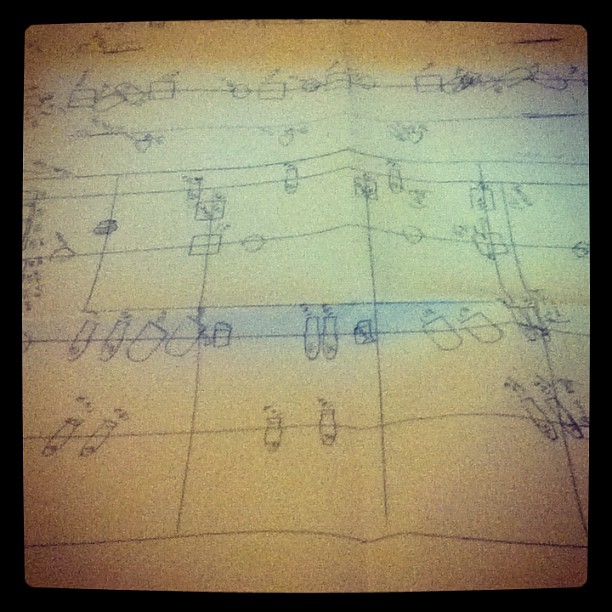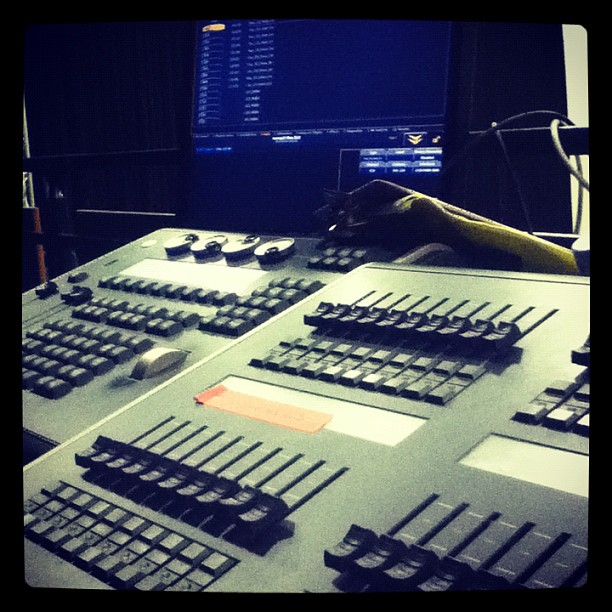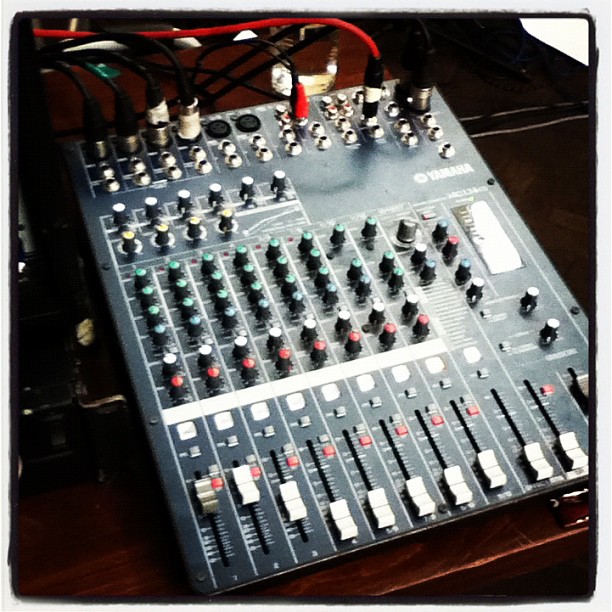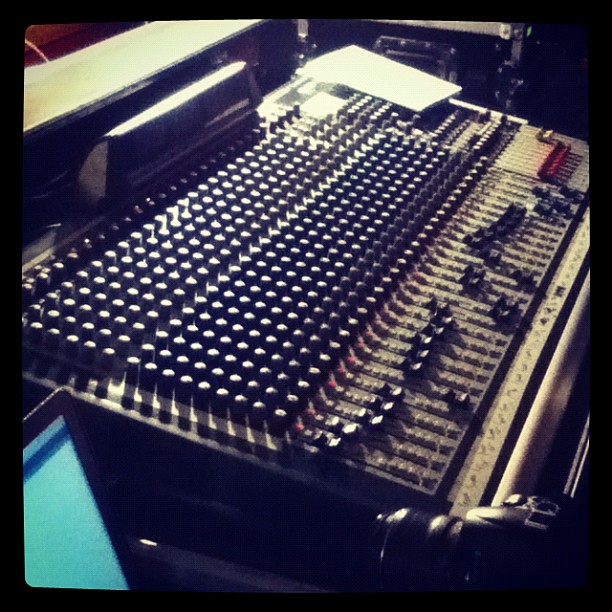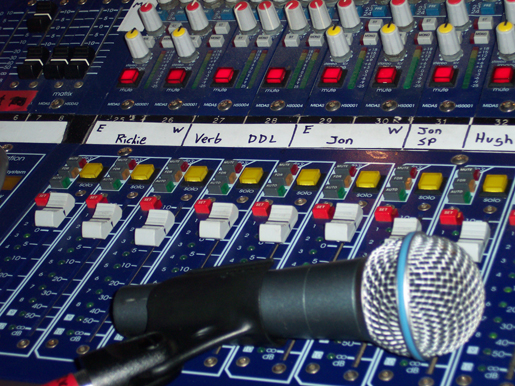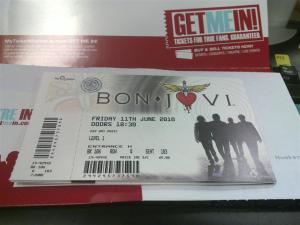New Project!
So I also stated when I started this blog, that I would also keep everyone up to date in my upcoming projects and progress as I make my way through the technical world.
My new project as head lighting designer has fallen into place, as I take on the work of being Head LD for Cinderella. So, I’ve already began working on this project and I’m a little late in making this blog entry, but its all good 😉
First of all my start to being designer for this show hasnt gone exactly smooth, seeing as though the director has YET to give me a script! Never good! But on the other side to it, as head LD, I can’t sit around doing nothing until I get a script, so its been all about planning, advance planning, and even more planning. And I’ve taken some photos for you guys along the way 😉 see im nice really.
I started off my planning by checking what lights we have available, and also what space Id have, I have had to work along side the set designer and the director in order to know where I have space! Because of cloths, and gauze flying in from LX bars, some of my space has been limited down. At present I have the full truss, and only 2 onstage LX bars.
After finding out exactly just how many lights I was able to use within my design, it was time to look at lighting gels! They’re known as color gels, color filters, lighting gels or simply, gels. But whatever you call them, color gels are thin sheets of polycarbonate or polyester that project color when placed in front of lighting fixtures. Such as the parcan.
 Above is the pack of LEE FILTERS I often use when picking out color gels. This pack of Lee Filters helps a lighting designer look through colors and find numbers of colors they need, the numbers used help with a lighting plan, giving riggers the correct number in order to rig the lights properly with the correct gels, but also helps the designer order the required gel colors. I spent a while looking through and chose some colors to use.
Above is the pack of LEE FILTERS I often use when picking out color gels. This pack of Lee Filters helps a lighting designer look through colors and find numbers of colors they need, the numbers used help with a lighting plan, giving riggers the correct number in order to rig the lights properly with the correct gels, but also helps the designer order the required gel colors. I spent a while looking through and chose some colors to use.
In the end I have ended up using 117, 137, 132, 106, 135, 119, 128, 202, 103, 136, 126. For a non-lighting designer or non technical person, those numbers would mean nothing!
I then constructed a small non-scaled plan of the trussing for the space the show will be held.
I then began jotting down some ideas on lighting positions, It was hard to do this without actually going into the theater, but I was able to give myself a rough plan of what I think could work before heading into the theater to give myself more creative options.
I then went into the theater to have a look at what space I would have, and to get a more creative feel of where and what area of staging I would need to cover, and the actual space I have. This is the theater I will be working in, and where the show of Cinderella will be performed!
As of now most days have consisted of sitting in front of paperwork, constructing ideas, lighting plans, patching plans and developing research, looking at previous shows of Cinderella and thinking of the best ways to light the actors and actresses, whilst also making sure I light the set without flooding the stage too much. Cinderella is a colorful show, needing as much color wash, and specials as possible, which is why I mainly opted for Mac 250 washes, Mac 350 entours, and the trusty parc 64s! My rig also consists of LED Fixtures, LED Battons, Fresnels, 500W floods and a range of Source 4s with various degrees.
As of now, my current lighting plan consists of this:
Not a great photo! 😉 But you get the idea. My lighting plan can change at any minute, either adding or taking away fixtures in order to make the show work best. I’m currently in total using approx 66 generics, 6 LED’s, 6 Macs (washes/entours) and 4 LED Battons. Ill be working with the ION ETC Lighting Desk. Not the most amazing desk, but its easy to use compared to many. Picture of the desk:
As of tommorow, I will be constructing my final mood board for the show, Ill be within the theater, and making my lighting plan on a TO SCALE drawing, Ill also be watching rehearsals of Cinderella and making notes on when cues could come in, ready to help my Lighting assistant programe the show. I will also be over seeing rigging also rigging myself, over seeing focusing of my lighting, and making sure all lighting areas are covered and sorted.
I will make another post tommorow with more photos!
Understanding Recording Contracts
Once a band or artist signs a record contract they are bound by it. The same as we are when we sign a new mobile phone contract. You know how it is after 1 year of a 24 month contract, we are usually sick of the phone and want a new one! So, if we don’t like the contract, we don’t sign it. In many cases outside of the music industry when someone is about to sign a contract, he or she hires a lawyer to interpret the contract and to help negotiate terms or even just understand the contract before its being signed. Since this blog is about the music industry and musicians, looking at a music contract, with an entertainment lawyer would be best suited they must be familiar with many different agreements and especially recording contracts.
The main reason musicians sign a record contract is for help with global exposure, getting the world and music out there and fame, the biggest reason for signing a recording contract is for them to actually get paid for their music. The record company will record the band, master it, bring in a producer to produce the album and sell them through record stores. (HMV Etc) The band only get paid a percentage of each album sold, not the full how much ever the CD is for sale for. This percentage is known as a royalty. There are other ways for musicians to make money which I posted in a previous post about incomes and expenses, but royalties on the sales of albums is the main source of money coming from a recording contract.
The percentage that the bands receive for each album sold is a negotiating point, but most usually on most contacts it can fall anywhere between 10% and 20% which when you think about it, isnt really that much, but at the end it soon adds up. Most new artists get a royalty percentage at around 10% because they are a new artist. If a CD sells for $15 and the royalty percentage is 10%, the band should get $1.50 for the sale of each CD that is sold. If the band was to sell a lot of copies they would get a great sum back, but with internet piracy, illegal downloading, and leaking of CD’s, artists are not getting what they originally would.
In some cases outside of America or with Indie Labels, the record company and artists split the profits of new CD 50/50. They will calculate the profits , the label takes the receipts for the album and deducts all of the direct costs. Direct costs meaning, studio time, cost of technicians to produce the CD, packaging, mastering, shipping to retailers, marketing, advertising, legal cost, taxes etc. Leaving the artist with the remainder of what is left. You can see that there is no guarantee at all that the band will make any money from a recording contract but in many cases with successful bands, there is not usually a problem. As a small band just starting out, and back when huge bands was starting out, its hard to think that they had no money, but maybe now it is clear why they had no money.
Promoting and marketing is also a big part of a recording contract, big names like Island Records, are one of the record labels, that if you asked anyone to name one, it would probably be one of the top said. Artists need as much promotion as possible, internet, TV, magazine, radio. A label can help with the exposure of that, and get the band out there, so people start talking and most importantly buying the music.
In return for royalties on albums sold the band also agrees to record those albums when signing the contract, (DUH!) Normally the recording contract will specify the contract periods very clearly, giving the band an indication of when the label wants the CD by, and a deadline that the recorded and finished CD will be ready. So when many people tweet at new bands “GIVE US A NEW CD!” and “WHEN WILL THE NEW CD BE OUT?!!”….Usually. They cannot release it yet. As stated on their record contract.
As most of you may remember, Bon Jovi signed a contract stating they would release a greatest hits CD along with a few extra tracks, as requested by the record company. During the time of world issues, Jon and Richie began writing and “The Circle” came into works. The record label, after most likely endless meetings and get together’s agreed to release the CD. The greatest hits also followed, as it was a binding record contract agreement. Not an extra money cash in. But an already signed agreement.
Our favourite band goes into the studio and records a new album the contract will specify that once it is recorded, it is the property of the record label the label owns the songs the band have recorded for a very, very long time. Sometimes with a duration of 5-10 years. This actually stops the band from re-recording any of the songs on the album for five to 10 years after the end of the contract.
Also….If the record label does not like the album, it has the right to reject it meaning the band has to record another album, so there could actually be some amazing albums out there of our favorite artists, which the record label hated, and we never got chance to actually hear, unless songs were released as demos or B-Sides. The label can also accept an album but shelve it and never release it. The lock-out of the 5-10 year duation will still apply in that case, even though the songs were never released!
Planning a Tour!
Planning a tour is not as easy as many people think! As a ‘fan’ of a band, many people just think a band can go into a venue, play, and leave. And it’s not as simple as that at all. In fact there is more behind the scenes than many people would even begin to think of. And us ‘techies’ have a bigger and harder job than people seem to realize.
Over my study time progressing with my technical journey, I have actors call us lazy, tell us to get real jobs, and think we sit around all day doing nothing. Which really {insert swearword here}! 😉 Luckily for me when I asked some of my twitter followers how easy they thought it was putting on a tour, they are understanding music followers who DID understand how much work goes into a tour!
First of all a band must have material to go on the road with, a new CD, previous CD’s something that will bring their audience back every time. They then need to find a tour promoter. A tour promoter will organizes a tour and makes sure it’s profitable and that the band are getting something back from what is being spent on the tour to make it happen. It would include presenting, advertising and sometimes even financing concerts at arenas, festivals and other special events. If the promoter pays for it all, the band will gain nothing until the promoter has gained back their money. The promoter finds the band, the venue and on-site labor, and then handles all the advertising, marketing and possibly even ticket sales for the tour. The biggest national promoters of music tours are Live Nation and AEG Live, which we have ALL come across at some stage.
The band need to then work with the concert promoter in order to decide what happens next. Once they have worked out a price, then split percentage and other concert details with the concert promoter, they still need to agree on a daily work schedule. This will include load in and load out for the crew. Band interviews, band TV appearances, any special VIP package extras, sound checks, rehearsals.
They need to make sure that there will be enough travel time, so if the band have an interview across town, making sure, allowing for traffic and weather conditions, that the band will arrive back in time to set themselves up and do any necessary rehearsing, sound checking and adjustments before the show. Usually IEM (In ear monitors) are set to the specific band member, and do not need adjusting.
They also need to make sure that days off are worked into the schedule to give the band and crew time to recuperate after a number of hard days of concerts, setting up etc. We have all seen that Bon Jovi have a few days between shows. This gives band and crew a few days to catch up on sleep, relax and get ready for another few days of mayhem.
Keep in mind that big bands such as Bon Jovi involve a lot more than setting up, sound check and playing for an audience. A promoter or record label is likely to want the band to also do local TV interviews magazine interviews, radio media, and sign autographs for VIP merchandise, or prize competitions. So even on the days off. The band may still end up working.
Even though a tour contract probably provides for some local crew at every stop on the tour, most bands will have their OWN crew that travels with the band from venue to venue. This tour crew is most important because, unlike the local crew, they know the band, its show and its equipment, and they’re there every step of the way to make sure the concerts go smoothly. They know how things are set up, where they are set up, and most importantly all the levels in which the show is staged at.
Below is a list of possible technicians that are brought in, in order to make YOUR show happen! Most of these below are used within a Bon Jovi tour and some are added in which would be used for an acting show tour. Such as Memphis.
Lighting Designer, Lighting Operator, Rigger, Front of House engineer, Camera Operator, Costume Director, Stage Manager, Assistant Stage Manager, Band Manager, Road Manager, Production Manager, Production Co-Ordinator, Stage Manager, VIP Co-Ordinator, Screen Tech, Wardrobe, Box Office/Ticketing, Instrument Tech, Monitor engineer, Director, Lighting Director, Merchandiser, Stage Crew, Costume Designer, Props, Acting Coach, Admin Assistant, AV Technician, Box Office Assistant , Box Office Manager / Supervisor , Box Office Manager, Carpenter, Casting Assistant, Casting Director, Chief Electrician, Choreographer, Company Manager, Company Stage Manager, Composer , Costume Cutter, Deputy Stage Manager, Dresser , Events Manager, Flyman, Followspot Operator, Makeup Artist, Production Assistant, Production Co-ordinator, Production Manager, Production Photographer, Production Supervisor, Project Manager, Prop Maker, Props Assistant, Props Buyer , Props Manager, Props Supervisor, Pyro technician, Set Builder, Set Designer, Sound Designer, Sound Engineer, Sound Manager, Sound Operator, Sound Technician, Special Effects Technician ,Stage Assistant, Stage Door Keeper , Stage Wingman, Technical Manager, Technical Stage Manager ,Technician, Wardrobe Assistant, Wardrobe Manager, Catering, Catering assistant, security.
Many people I have spoken to when I tell them I’m studying within technical say “Ohhhh I’d love to do that” and “How do I do it? I want to do it”. When in fact 1) Its not an easy job. 2) Its not about meeting your favourite celebrity, getting backstage and hanging with the band. In fact. None of that happens. Your working. You remain proffesional. And do your job. Walking up to your celebrity and asking for autographs and photos, when your supposed to be working is well. Wierd. And not showing a proffesional attitude whilst on the job.
To be even considered to be on tour as crew you need to be flexible and adaptable. Tours can last from anything as a few weeks, to up to a year or two. Something can and will undoubtedly will go wrong during a concert, and you’ll need someone who can deal with the situation calmly and quickly. Remember when Bon Jovi’s PA blew? Under the stage, there was most likely a LOT of technicians running around in order to get the show UP and running again, equipment won’t stay wonderful and working forever. It’s nobodies fault. You just need to know HOW to fix it, and fast. Or make sure you know where back up equipment is! Working in a team. VITAL. If you don’t get along with people, or rather work on your own. You won’t make a good road crew member. Communication and team work is vital. And let’s face it. If your going to spend months on the road with people. If you aren’t going to get along. It’s NOT going to be nice. You need to be highly skilled at the jobs required and be very familiar to the equipment so that they can run it effectively in unfamiliar venues. There is no use saying, I know what that button does. You need to know what the whole console does. And how to fix it if it turns off for no reason. And of course. Commitment. Sticking with the tour and the band until the end. If you are a good technician and do well at your job, and decide, you will do this show, but not that one, but will do the other one. NOT GOOD ENOUGH. On a tour. Your committed. There. And ready. Throughout the whole tour.
Once the crew is in place. The rest of the work comes. Finding venues who are available. Travel. Accommodation. Country Visa’s. Country and State Taxes. Crew accommodation. Equipment needed. Hire equipment. Travel for equipment. Crew Travel. Income and Expenses.
Not as easy as it looks…..huh…
Mixing Desks
Mixing desks can vary at size, you will find small desks and massive desks! They are generally referred to by the number of input and output channels they have.
An input channel is a place where a single audio signal can be connected into the soundboard. An output channel is a path of exit from a soundboard for an audio signal.
When most of us look at mixing desks, whether walking past them at shows, or looking at them from backstage tours, most people wouldn’t know where to start, but it’s actually more easier than you think. There is a lot to see and a lot to learn. But it’s not impossible.
Here is is 2 photos below of 2 mixing desks I’ve recently worked with at local gigs.
Every normal mixing desk will contain a XLR Input, Equalization (high,mid,low), reverb, gain sliders, master gain, mute, solo,level meters and the output.
Each channel on a mixer typically has what are referred to as auxiliary sends (aux) it’s common to find 1-8 aux sends on a sound desk. Each AUX send typically has a knob associated with that particular aux send on each verticle channel strip.
Generally each channel has some sort of equalization (EQ) that is controls to adjust the tone quality of the sound. Small mixers only have space for bass and treble, and other sound desks maybe have bass, treble, mid range and adjustable range controls. The adjustable controls are called parametric equalizers which allows the sound technician to choose not only to boost or cut a frequency range but to choose which range to work with. For an example, removing the bass from a wireless mic input can reduce the annoying clunky thuds we can sometimes hear with a mic.
You next have the sliders/faders. They are usually located at the bottom of the mixing desk, which are controlling the level of the signal sent to the outputs of the mixing desk.
Another 2 buttons commonly found on mixing desks are “solo” and “mute”. Mute, which is obvious, silences the input signal. This will usually be used when musicians are offstage, or not using the mic for another reason. If the mic sets are wireless and attached to the person, the sound technician will usually mute them while backstage, otherwise conversations backstage would be broadcast out to the crowd!
The solo switch found in many different forms on sound mixers allows a signal to be listened to by itself. Often it can be routed to a pair of headphones which is a really useful feature for tapes/CDs.
Equalizers are used to shape the tone of a sound, with mic’s the equalizers can be extremely useful in eliminating feedback problems, yep, that awful hum or high pitched squeal that makes everyone pull a face! Equalizers are also often used to overcome deficiencies in the speakers used or the venue they are being used in.
Below are a few photos of the Bon Jovi mixing desk! 🙂
The Lighting Designer
When we go to concerts most of us don’t tend to look at the lighting, unless your into technical. Most people spend their time looking at the band. But how much work is actually put in, to make your show look good, and to light your band members so you can enjoy the show. Stage lighting for live music is essential, not only to actually see the bands/musicians on stage, but also to enhance the music and create an atmosphere for the concert. Lighting is meant to help out the band, but not be the star of the show.
But lighting happens in more places than you would think of, lighting designers create the lighting not only for music but for theater, dance, opera, television shows, video/film and movie productions. They can also be involved in lighting museum exhibits, public parks, and large buildings, dances, religious occasions, public events, fashion shows, and festivals. Wherever lighting needs to be dramatic and highlight a person/band/ group or monument, lighting designers have a hand within the task at hand.
Lighting designers are responsible for setting the mood for each scene, song, environment or set. And the process to do this is more than just pressing a few buttons and making lights work. Its a far bigger and longer process.
Lighting designers often work as technicians as well which requires them to help setting up and running the lights. This requires a good technical knowledge of how to rig, patch, and correctly fix the lights to the trussing with safety clamps. Lighting designers and Lighting Techs have to have a comfort with heights, and a good sense of timing when programming for a song.
Typical responsibilities of a lighting designer:
- If the show is for a theater project, the first thing the designer needs to do is read the script. But for this blog. I’m talking about music. So in the case of the music, the designer may listen to the band’s music in order to gain a feel of the music.
- Discussing the technical requirements.
- Researching the venue- This is very important, as a designer needs to know the technical specs of a venue before designing a lighting plan. Knowing the space, and trussing available will give the design an idea of what equipment would be suitable, and what lighting they are able to use. Some venues already have their own equipment so it’s good to find out what they have, and see if you are able to use that.
- Establish a lighting plan, drawing it out for the technicians- Another important step. Drawing out the lighting plan so that all your lighting crew are able to help you rig. Drawing out a lighting plan takes careful thought, and thinking about many lights which would be able to light the musician/band in the best way possible.
- Whilst deciding and designing the lighting plan the lighting designer must think of the lights, gels and any other additional equipment that may be required.
- Once the lighting plan is ready, the designer along with the crew will travel to the venue, this could be straight after another show, taking all the equipment down, travelling hundreds of miles and reaching the next venue after as much sleep as possible getting the equipment into the venue, the lighting designer will then supervise the hanging and focusing of lighting instruments, ensuring that the lighting plan is being followed, and the lights are in the correct position, facing the right way, and working.
- Whilst travelling the designer would have already plotted the songs before touring, or spent hours of time pre-programming the lighting with the correct plan on lighting software. Or the designer will spend time with the lighting desk programming songs, ready to connect with the lights up in the stadium. A typical song could take from 4-9 hours to program depending on the requirements. So imagine how many songs are programmed for Bon Jovi, and how much time the designer had spent in order to have the lighting ready for the show.
- May maintain and repair the equipment- A lighting designer should have knowledge in fixing and maintaining the equipment. Having the knowledge to know how to fix the lights come in very very handy!
- Ensuring the show runs smoothly.
- Create a production notebook containing: Contact information if any lights have been hired, contact information for the crew, and for organisations who the equipment has been bought from. Schedules for lighting meetings, load ins, get outs, rehearsals, sound checks. Notes from meetings, the band may have certain lighting requirements they want. Research of the venue and any other relevant research. Sketches, lighting sketches, lighting plans, ideas. All lighting documentation.
- Be in communication with all members of the production team about any issues that might affect others such as color, if the musician is wearing something specific, it needs the correct lighting. Texture, Floor surfaces, fog, smoke machines, safety issues, special effects, things on stage. To keep in contact with all of the team, so team work and communication is vital.
- The Lighting Designer needs to provide the Master Electrician with atleast 3 copies of the lighting plot, access to the paperwork, and any other required details.
- The Lighting Designer will be in very close contact with the Director (For a theater show) Stage Manager both for music events and theater shows, Production Manager, Master Electrician, Technical Director, Set Designer, Costume Designer and Sound Designer for any changes that might affect the lighting, again communication is a must!
Below is the lighting desk used for Bon Jovi shows. The GrandMA lighting desk.
The typical average cost of the GrandMA lighting desk in FullSize will range. But retail at $78,500. For a smaller size, retailing at $57,000. These are prices without of course the other things that are required to go with it.
Next time you attend a show, take a second to look at the lighting, and think of the process the designer and the team have gone through in order to make that happen. And remember, without the lighting designer, you wouldn’t be able to see your band 😉
Ticket Prices
Some of us moan when we see the prices of tickets for our favorite artists! Many of us thinking, how can they charge that much for a ticket! But there is more behind it. Many seem to think a band and promoters will sit down and say “Yep, charge $500 for a seat” end and done deal. But it’s not the case.
The ticket fees for concerts are determined by the band’s management, in close consultation with the promoter. A music tour is a multi million $$$ operation. There are often well over 100 crew members involved who will travel all over the world to build and pull down several concert stages, set up equipment and instruments for major shows, so a band or musician is be able to perform on as many dates possible in such a short period of time.
To determine the price of your concert ticket the management and promoters look at the costs of a certain concert this will involve looking at the venue, stage, equipment, security, promotion, crew and advertising as well as the fee the band wants to earn, the percentage of the concert organizer and the number of visitors to be expected.
For a small example a small venue could cost something from $350+ per hour in order to host a show, taking that rate up to $550+ per hour on Peak Rate, Bank Holidays, and Weekends, this of course only looking at a small theater venue near me. Larger venues such as Madison Square Gardens, London Wembley Arena and other various venues are hard to acquire information on unless you have inner connections or have or will be staging there! But from small research, you would look at around the $95,000 mark, and most likely that for other arena’s and stadiums.
All of what is above has already been considered in the entrance fee. Prices are more or less the same all over the world for shows but because in one country a show may be at a bigger stadium or arena, you may have 70,000 people expected to attend a concert in one particular venue, and in another country only 20,000, prices will vary slightly from country to country depending on the size and people expected. Of course of popularity too, you will notice new artists just starting out, tickets will only cost something like $15-30 per ticket. This is because the place they are playing at, the equipment required etc is smaller, the fees to hire the venue are a lot smaller, so these artists are able to set a much lower fee. Whereas a large scale band, such as Bon Jovi, who play in sell out stadiums across the world, do not go in small venues. Imagine trying to squash 75,000 Bon Jovi fans into a venue of 20,000. Sure you would get cheaper tickets, but would you really want to be squashed in? Plus. Its illegal.
Be careful with your tickets too! Tickets bought through auction sites such as eBay, do NOT guarantee access to venues! So be aware if you do buy tickets online. They may not be official tickets, or they may not allow you in the venue if the tickets was not supposed to be sold on.
You pay service costs on websites such as Ticketmaster/AEG/Live Nation because of the ticketing system. The service costs are the costs that directly influence the ticket. Think about it, the costs for printing your ticket, posting it to you, scanning tickets, recording the correct seats, helpdesks, back offices, data communication, ticket inspection and staff needed to record all shows and events into the ticketing system. To ensure everyone has the right tickets, to the right event, on the right night. Some websites now allow you to print your own ticket off.
But have you ever thought about how many people it takes to make that show what it is? All your crew, building the stage, setting up instruments, setting up lighting, sound, and security to ensure you have a safe and fun night, the band getting into the arena, and you in the seats you have bought, and not thrown back 50 yards. You have to figure, they have to pay for the Venue…they have to pay for the staff to work that Venue…they have to pay the musician..the musicians staff…they have to pay to hire the venue to set up that venue. And all of those expenses have always existed…but they’ve gone up just like everything else in the past years. Plus with gas prices and travel expenses with today’s economy. I guess if you really think about it, it makes sense why tickets can be so expensive.
If you are really want to see a concert, and see the ticket prices are high, think why, and what has to happen in order to make that show happen. If you don’t want to pay the price for a good show, that is the decision of the ticket buyer. But at the end, if you want to see the musician live. That’s the price you have to pay, excuse the pun 😉
Income and Expenses of Touring!
When we look at music artists these days, we assume that every single ticket we buy, goes straight into their pocket.
Wrong.
The list of typical expenses to your music artist are more than you think, and the amount of work that has to be put behind all of the shows you attend is amazing. And something a lot of people never think about.
So below is a small list of each, both income, and expenses of touring. You will be surprised by which list is the longest!
INCOME
- Live Performance Fees- Some TV shows may pay the band in order to have them appear on the show to increase ratings.
- Record Label Recording Contract Royalties- The band get paid a percentage of each album sold.
- Publishing Income Sources- The primary sources of income of a song include performance rights, mechanical licenses, synchronization licenses and print rights. These sources can be exploited through film, television, videos, records, CDs, tapes, MP3 downloads, sheet music, commercials, broadcasting, internet distributions, as well as other forms of exploitation. For example, when a Bon Jovi song was used on Glee. They would of needed to get rights to use that song.
- Mechanical Royalties (Sales of CDs, DVDs)
- Performance Royalties (Such as Broadcasting, Radio, TV, Satellite radio)
- Synchronization Fees (TV, Film)
- Sheet Music Sales- If any of you have books from a band with various sheet music to help you learn an instrument.
- Commercial Jingles- Some companies wish to use a song within their commercials. This way the band will get something back from the company using their song, whilst the song gets more publicity, and helps the company to promote their item/service.
- Merchandising Royalties- All the merchandise we buy, t-shirts, key ring’s, hoodies, photos, various merchandise, again only a percentage of this goes directly to the band, the rest will go to other companies.
- Internet streaming/ downloads- Single’s coming out, album downloads, single downloads. This is why when you don’t buy the artist’s music and rip it from you-tube, it does hurt your favorite artist. You haven’t downloaded the song from them. You have stolen the song.
- Book/ DVD Sales- When a band releases a DVD of their tour or book (Such as When we Were Beautiful) again a percentage will go to the band, the rest to the crew/publishers who helped in order to create it.
EXPENSES
- Equipment Rental charges- In-case the band require certain lighting within a stadium or a certain instrument for a song, the extra pieces may be hired in either that or paid for fully.
- Guest Musician fees- Have you been to a show where a special guest has appeared onstage? Usually they will want something for doing it. Unless they are very good friends with the artist, then they may just do it out of pure musical love 😉
- Recording within a studio, costs will be on: Producer, Engineer, Studio Hire, Audio Supplies, Mastering Fees, Graphics artist, Photographer, Cover Art Costs, CD/Vinyl Manufacturing and duplication Charges, along with Marketing, Sales plans.
- Publicists Fees
- Promotion for the tour- Flyers/Billboards/Posters/TV Commercials/Radio Ads
- Photographer fees and duplication charges- At one stage a few of us have had a look into having a photographer for an event, and we all know some of the charges!
- Internet Website costs (Design, maintenance, access fees etc. Your artist will need to pay someone to run the website, keep the designs up to date, keep the information up to date. This all costs)
- Misc. online promotions- Free MP3’s, Free downloading. Something artist’s can do to get their music out there.
- Band Equipment Costs- For example, Richie Sambora requires several pedals, talk box effect.
- Instrument purchases/rentals – New guitars/ Drums/ Bass/ Vocals
- Tour Luggage- Transporting equipment to each venue, each country, each city.
- Misc. equipment repair/maintenance costs (drumsticks, strings, tuners etc)
- Tour Equipment- Lighting Desks, Sound Desks, FOH, Stage Monitors, IEM In Ear Monitors, Mics, Drum mics, keyboard mics, acoustic mics.
- Rehearsal space costs- Using the arena/stadium days earlier in order to practice, halls and studios to practise.
- Office Expenses- Taxes
- Songwriting – Copyrighted songs registration/ filing costs if a band was to use other artists songs live. Or re-record the song in their own way, they would need to do this.
- Performance Rights Organization Fees ( ASCAP-BMI-SESAC)
- Conferences between tour team- budget
- Artist Business Team Costs such as a Personal Manager, accountant, booking agents, publicist, music attorney
- Transportation costs- Trucks to carry the equipment, getting them on ships. Planes, air fair. Highway and ferry tolls. Gas expenses, service and repairs to the trucks. Cars to take the band to and from venues, and interviews.
- Merchandise (T-Shirts, Hoodies, Bags, etc) Expenses such as designing costs, manufacturing and shipping costs, how much it will cost them to send to us, to some countries items can be hefty in cost, so free shipping is a BIG advantage when they offer it!
- Costumes/Stage clothing- What the band wear on stage, someone will often be in charge of getting together a wardrobe which is comfortable for the band, you wouldn’t expect to see Jon Bon Jovi on stage during a tour wearing a suit, yet maybe at an event for the White House you will. But for an artist, they would rather be comfortable on stage in something they can move around in and give you a good show.
- Insurance- Needed on health, equipment, instruments, life cover. If any accidents or incidents where to occur. We all know this.
- Unions
- Video production and manufacturing costs of CD’s and DVD’s. Recording events. You will see camera’s at Bon Jovi show’s, Tony Bongiovi will be backstage, recording some, and making sure that you get a good view up on the screens! Equipment such as cameras and all of the equipment in order to make that work is also required.
- Road Manager/Band Manager/Accountant/Roadies salaries. All of us roadies need paying its a hard job!
To all of the above, there is probably many things I have even MISSED! But that is the average income and outgoings of a touring and musical artist. Some of the things as consumers, we never thought about.
Before going on to you tube and downloading your favorite artists new song or an artists song, remember. The amount they have spent making sure you get it and enjoy it as a fan! 😉
A promoter might take over some of the work on tour, to ensure the tickets, advertising and sales are covered. But remember, just as an EXAMPLE Say a band were to tour for 12 months, the promoter puts in $5 million into making sure everything was sorted. If over that 12 months, the total income was to be exactly $5 million. The band would receive nothing. Only the other incomes they have in place.
xoxoxox
Why YOUR venue isn’t as easy as you think!
When a tour happens, we have all done it at one stage if we are on social networking sites such as twitter or Facebook. Yep. Beg the artist! “Please come to _______” and “____ loves you please come here!” Even I have done it at some stage!
But when you think about your request, many of us do not think about the request into detail! The artist has so much work to do in order to come to your country, and to the arena that is best suited and tailored for their show. A band such as Bon Jovi, have a lot to think about in order to carry their show through, more than you as a audience member can even begin to think of.
Firstly, they must even see if the venue is available, or if there are venue’s available for the date they are available! You must remember, arena’s and stadiums have other artists booked there not just your favorite act! It can go both ways for a band, they can either book directly with the venue themselves , in which case they as a band take on the costs and responsibilities of promoting the show or book with a promoter, who takes charge of promoting the show, which again is not as easy as it sounds. The promoter shoulders the responsibility for all the promotional costs. The promoter will pay out for all the promotional costs up front, but the band will NOT get paid until the promoter makes that initial investment in the show back. So it could take a while. Depending on the scale of the show!
The band cannot just play in the arena or stadium for free, many things have to be considered when booking a stadium or arena. How much is the hire fee/rental fee? When can their crew load-in all the equipment and when can the band sound check? When can you open doors to allow the audience in? When does the show need to end, is there local curfew? Will this effect the show? What do the venue provide technically? Is it enough? Are there any special rules that have to be followed?
I will go into a more detailed income and expenditure sheet within a later post. You have to remember, that if the band are paying for all of the costs directly, this is only the beginning, and if they have a promoter doing the work, the band have gained nothing yet.
In order to make a secure booking, the band need to look at the fan base, and how popular the area and country is in order to put on a show. It’s all well and good saying how much your country in fact loves the band, but if the band was to book a stadium for 30,000 people, print 30,000 tickets, book hotels, travel expenses, visas to the country, advertising etc, and only 10,000 tickets have been booked, if they are paying for the expenses, they are now at a loss, and if the promoter is paying, they aren’t going to be a happy person, as they have spent out on a show, which has not brought in what it was expected. If the promoter is paying, the next show may not be great, as they will not want to pay out all the money they did last time to which they lost on.
Pre-production of a show is more hard work than you think, and a lot more to consider than just playing somewhere and leaving. Within another post, I’ll talk more about what has to be considered within a tour, the usual income and expenses. And maybe even some average figures.
xoxox
New Blog!
So, I decided to begin a blog. Not about myself, not about bands, but about something I’m studying something I’m passionate about and something many music fan’s do not think about.
The work that goes on BEHIND the scenes to make your show even happen. Without the technical crew, behind the scenes, none of the concerts you have enjoyed would have gone ahead, and if they had, they wouldn’t of been great.
Over the years, I’ve been told my choice of career was “not realistic” and that I should get a real job. When in fact the people saying it, really had no idea what the job of a technician or backstage crew really entitles.
What do I get from this blog? Giving you guys knowledge of the hard work that really goes on behind the scenes at your favorite shows, and the technicians that get called lazy, or told to “get a real job” in fact do! 😉
I’ll be covering a lot of subjects, a lot of topics and various shows I’m working on as a technician myself, and maybe over the years, as I enter the industry, Ill cover more and more things as I go (:
Hope you enjoy the blog, and I hope it gives you more of a clue of the work that happens…..The tech…to the music (:
xoxoxo



